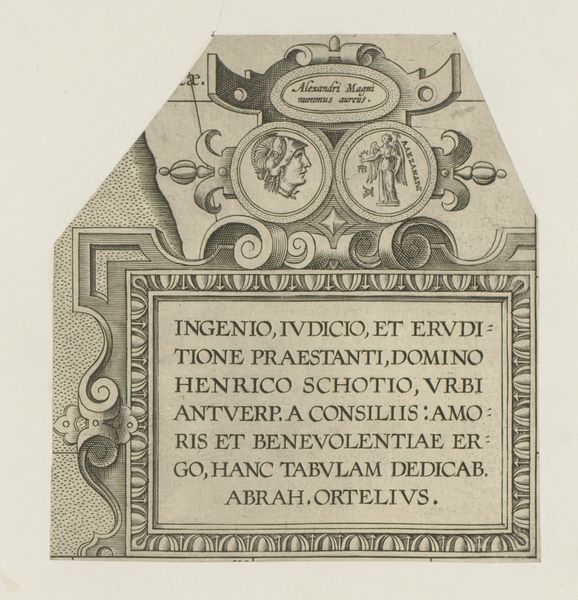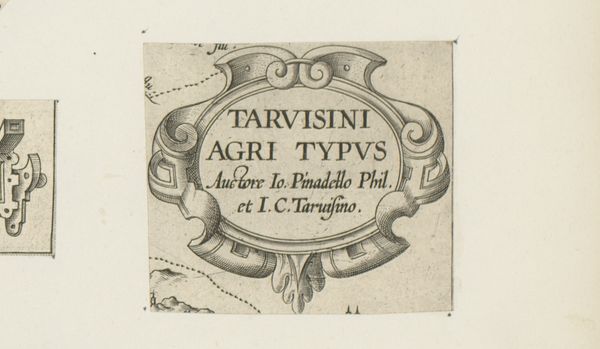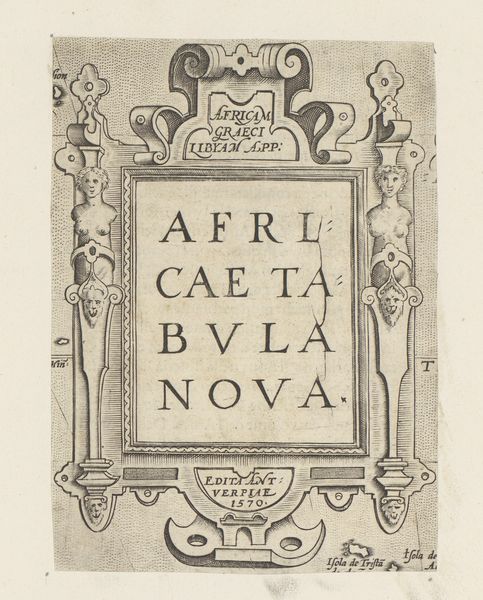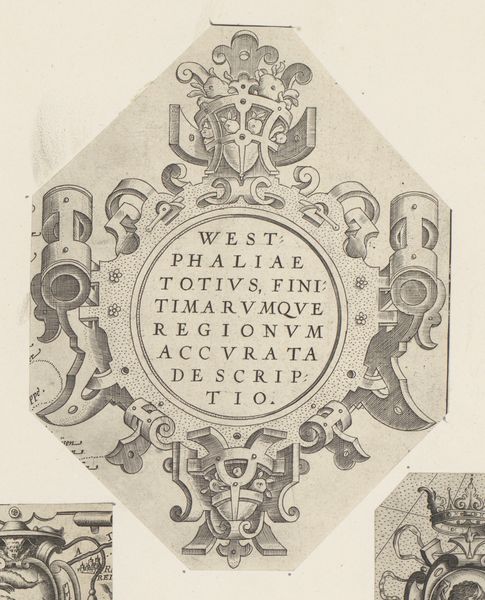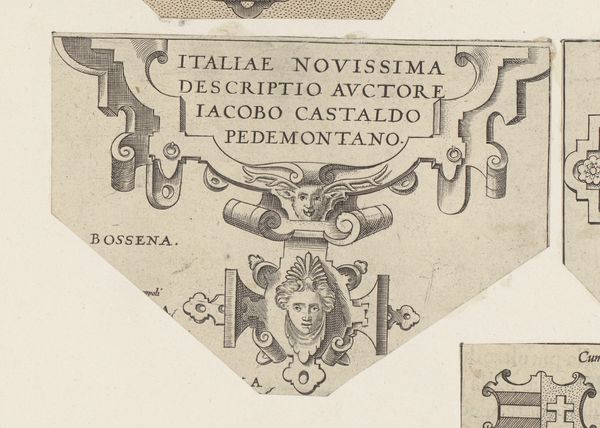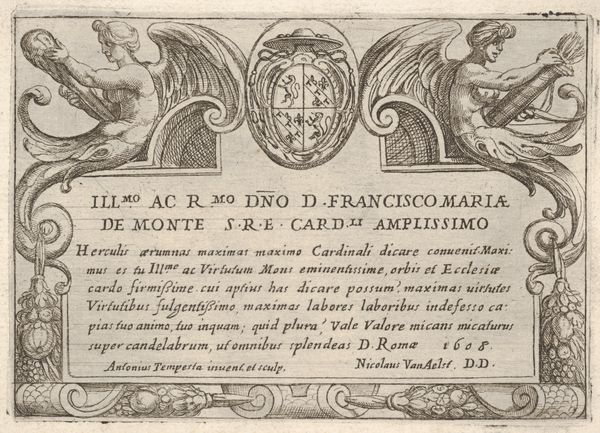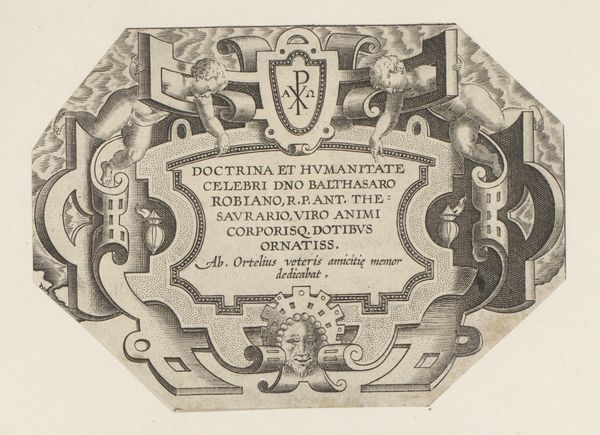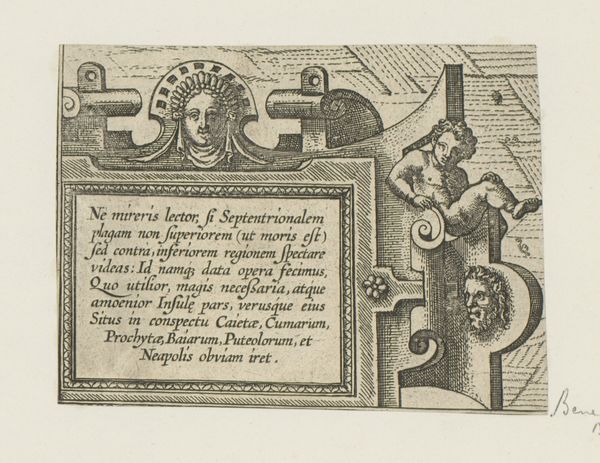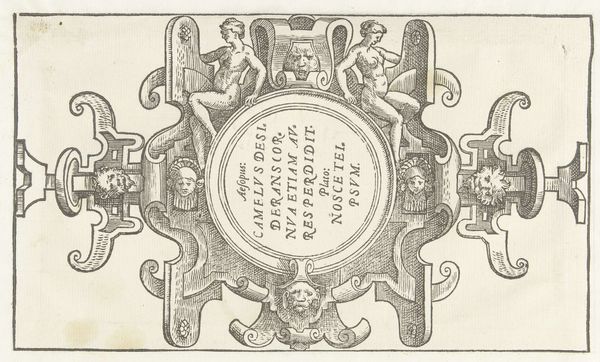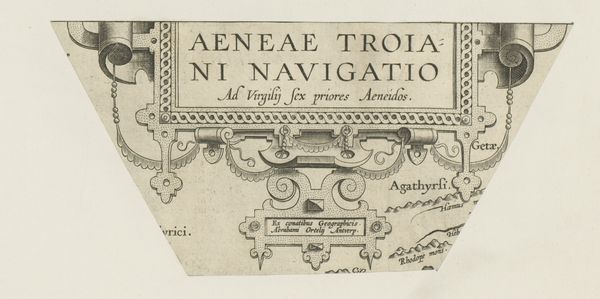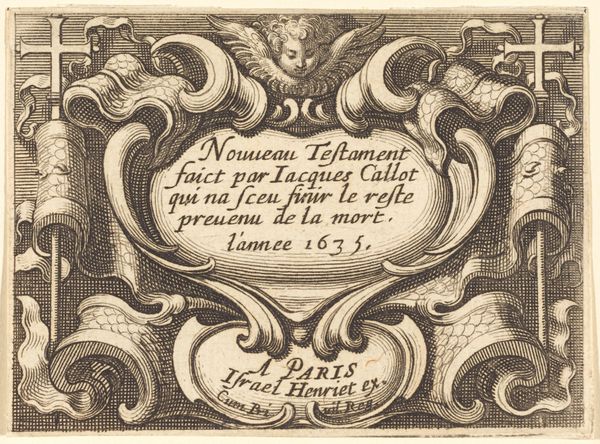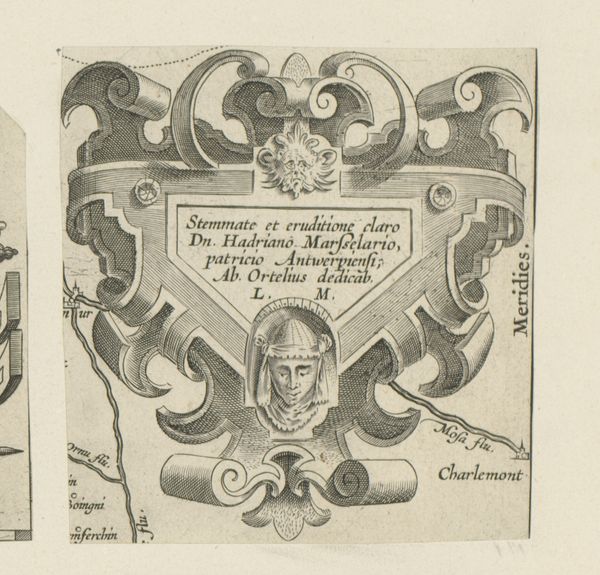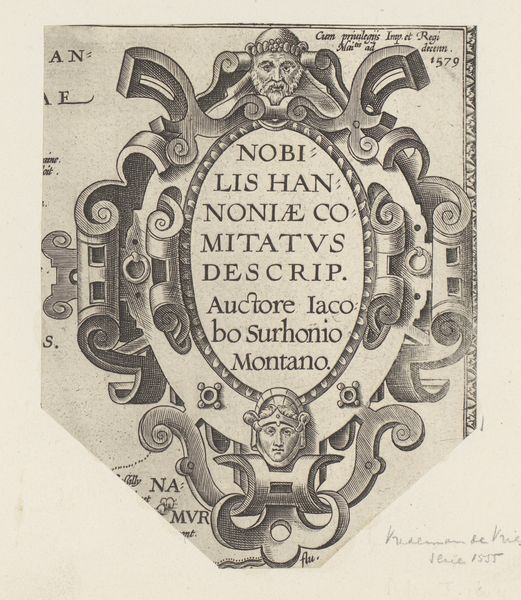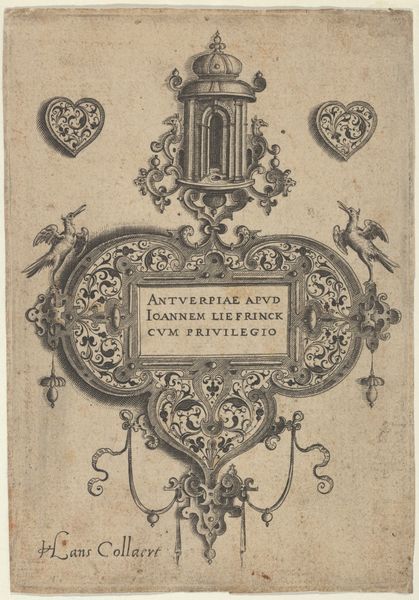
graphic-art, print, engraving
#
graphic-art
#
aged paper
#
medieval
# print
#
old engraving style
#
hand drawn type
#
11_renaissance
#
personal sketchbook
#
geometric
#
pen-ink sketch
#
pen work
#
sketchbook drawing
#
golden font
#
engraving
#
historical font
#
columned text
Dimensions: height 122 mm, width 155 mm
Copyright: Rijks Museum: Open Domain
Curator: This engraving, titled "Ovale cartouche met Christusmonogram en bokkenkop," dates back to 1590. It's a compelling example of graphic art from the late Renaissance. Editor: My first impression is one of archaic formality. The lines are crisp, almost austere, yet there's an odd pagan touch with the goat's head at the bottom, isn't there? Curator: Exactly! That goat's head is central to the work's meaning. The 'bokkenkop,' combined with the 'Christusmonogram' above, presents a fascinating tension between classical pagan imagery and Christian symbolism. We must remember that this was an era of intellectual and artistic ferment, grappling with both its classical heritage and religious convictions. Editor: So, this isn't simply a decorative piece? It speaks to the period's larger socio-religious dynamics? Curator: Precisely. The cartouche frames the title which loosely translates to "Pannoniae, et Illyrici Veteris Tabula" or "Map of old Pannonia and Illyricum". Pannonia and Illyria being old roman provinces, so it becomes likely that this would have adorned a page from an Atlas published by Abraham Ortelius in Antwerp. And you notice how the images on either side bear small diadems? Editor: I do now. It makes me consider the act of looking at old maps: not merely about navigation, but claiming geographical or even social space... The text itself looks deliberately antiquated in its construction. Was the intended effect one of historical credibility? Curator: Precisely! The engraving, made anonymously, achieves a sense of authority through stylistic and symbolic choices rooted in an established cultural past. What seems decorative is, in fact, deeply intertwined with claiming territory and projecting power. Editor: Thinking about the visual economy of that time, its almost commercial, as maps became ever more sophisticated, beautiful things to purchase and show off one's "worldly knowledge." So there's the element of class, too? Curator: Yes, definitely! By owning this graphic art in one's home would signal worldly knowledge, as you suggest. What starts as an image actually communicates wealth, power, and even the ongoing clashes of the era. Editor: A compact, powerful piece indeed. Curator: A visual testament to a period in transition.
Comments
No comments
Be the first to comment and join the conversation on the ultimate creative platform.
